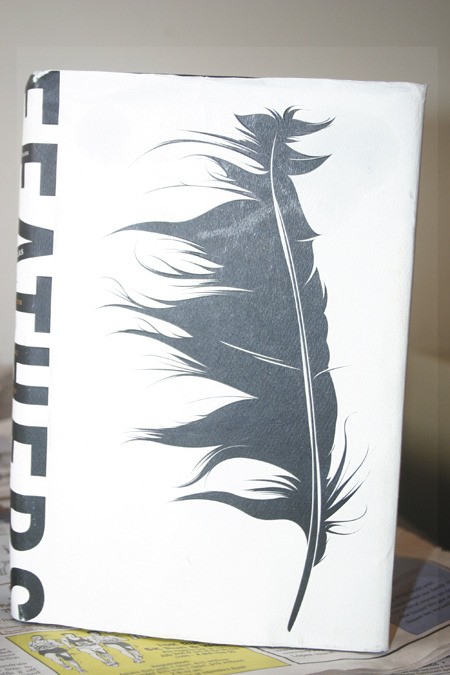By Cali Bagby
The vultures made him do it, or at least that is what Thor Hanson claims led him to his obsession of feathers.
And he isn’t afraid to tell you all the gruesome details.
“My hair, face and forearms gave off a sickening boneyard stench as rank as anything drifting our way from the vultures’ direction,” Hanson writes. “I smelled like a rotten zebra and for good reason.”
This is how Hanson describes himself after he and a team of biologists dig through “strands of ropy goo, and flecks of half-digested bush grass” and other carrion used to attract vultures.
These birds are of particular interest because they don’t have feathers on their heads.
“When every meal is a mess of guts and decay… the bareheaded birds would feed with less risk of illness,” Hanson concludes in his book.
This is just one scene from Hanson’s book “Feathers: The Evolution of a Natural Miracle,” which explores how feathers have evolved to assist birds in flight and survival, and how feathers have affected humans.
Hanson is a conservation biologist, Switzer Environmental Fellow and member of the Human Ecosystems Study Group.
His first book, “The Impenetrable Forest: My Gorilla Years in Uganda,” won the 2008 USA Book News Award for nature writing. In his newest book “Feathers,” Hanson asks, “What are feathers? How did they evolve? What do they mean to us?”
Hanson starts his tale on San Juan Island and then travels around the world to locations like a museum in the middle of Wyoming, the guano streaked grass of New Island, remote villages in Papua New Guinea and Australia’s harsh landscape, just to name a few.
He interviews showgirls in Las Vegas about their feathery costumes, and takes readers underwater to explore why so many feathers sank with the Titanic.
There are dark tales of the decline of feathers in fashion in the early 1900s, which led to the suicides of bankrupt merchants and ostrich ranchers.
Hanson’s fascination with feathers is contagious and his gift for storytelling makes his scientific findings magical and often hilarious.
The book is full of characters ranging from a Chinese scientist who wants to make his family proud, to the “Truck of Death” responsible for the death of many rodents, and the quirks of the Raccoon Shack, the building where Hanson researches birds through plucking feathers or creating a replicate of an 1800 quill pen.
Hanson also artfully weaves his family into stories through describing his patient wife or his sleeping child, Noah, on his chest as he hikes through the forest and spots an unusual feather, or a day of fly fishing when Noah tries to secretly eat stones.
And what makes the story most compelling, for those of us not easily inspired by feathers, is that Hanson makes you like him and the thought of tromping around in the snow searching for a Golden-crowned Kinglet in zero degree weather or sharing a beer while he discusses feather follicles, sounds like it could even be fun.
“It seems no matter how long one works with them, or how much one learns, feathers still retain the power, to inspire wonder,” writes Hanson after meeting a self-described “crazy, obsessed feather person” and hat designer in New York City.
You may not feel the same way about feathers, but your fascination with Hanson’s talent for storytelling will



